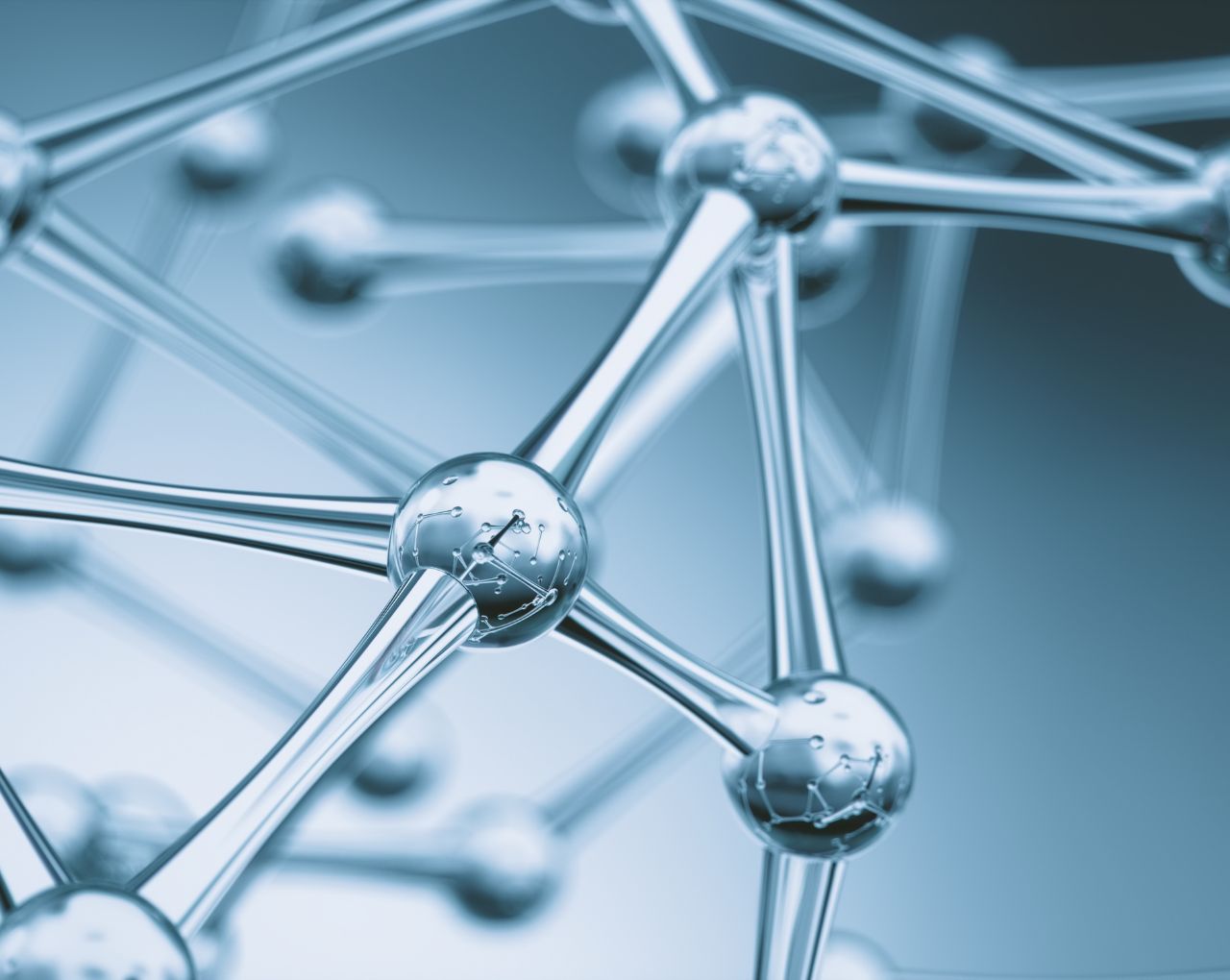THE THREE DIMENSIONAL FIBER MATRIX MODEL
To achieve a deeper understanding of how POWDER HOUSE’s ultrafine functional ingredient particles, interact with the human gastrointestinal environment, POWDER HOUSE developed the Three-Dimensional Fiber Matrix Model (3D-MATRIX), a structural representation and theoretical abstraction of a single ultrafine ingredient particle. The 3D-MATRIX incorporates a tridimensional fiber structure composed of soluble, insoluble, and antioxidant dietary fibers embedded with high-density polyphenols, potent antioxidants, and other bioactive compounds. Upon exposure to acidic gastric conditions, protective layers spontaneously form, triggering the self-microencapsulation of each ultrafine ingredient particle.

These layers serve as a barrier against premature bioactive degradation, ensuring enhanced stability and preservation throughout digestion. The dietary fiber matrix further reinforcing the physicochemical stability, autonomous release, and intestinal absorption efficiency of bioactive compounds. The 3D-MATRIX model extrapolates the multilevel mechanisms governing ingredient particle interactions within the gastrointestinal medium, mapping its progression through interconnected digestive phases to provide key insights into dynamic digestive interactions. As a transformative framework, the 3D-MATRIX model provides advanced insight into the physicochemical and biological interactions between ultrafine ingredient particles and the gastrointestinal environment, elucidating key mechanisms such as self-microencapsulation, autonomous particle dynamics, and the spatially and temporally regulated release and absorption of bioactive compounds. This advanced framework not only deepens the understanding of POWDER HOUSE’s ultrafine ingredients. Perhaps most critically, the protective encapsulation layers confer autonomous behavior to each ingredient particle, enabling dynamic physicochemical adaptation to the progressively changing conditions within the gastrointestinal tract. This autonomous responsiveness facilitates an autonomous, spatially selective, and temporally gradual release of polyphenols in their most bioavailable form, optimizing both their liberation and subsequent absorption along distinct segments of the intestinal epithelium.
